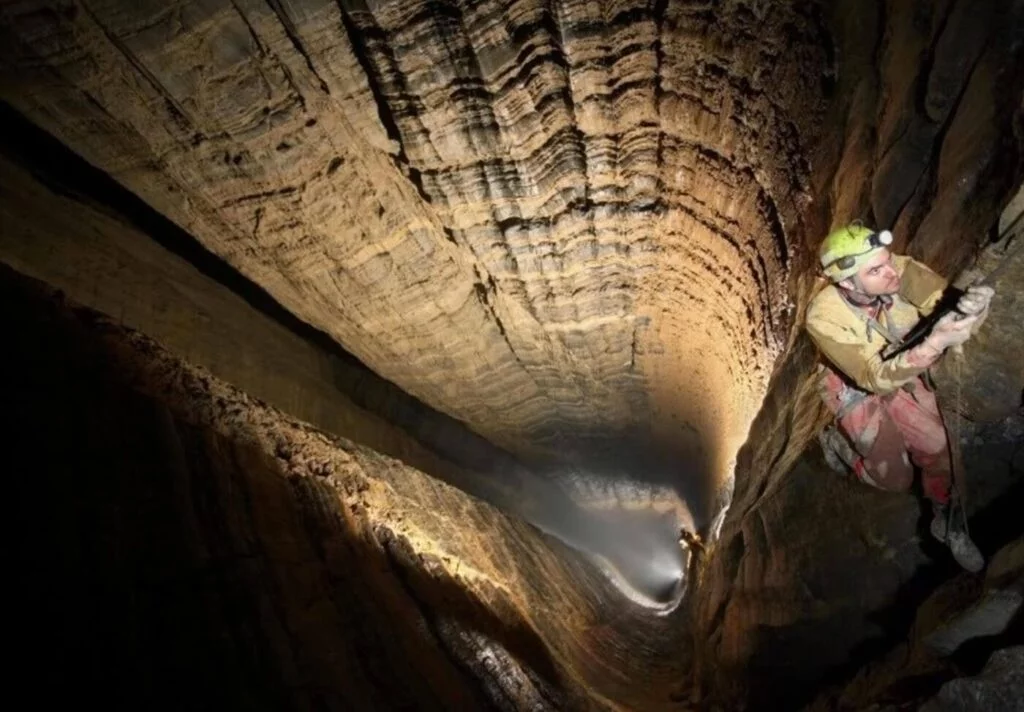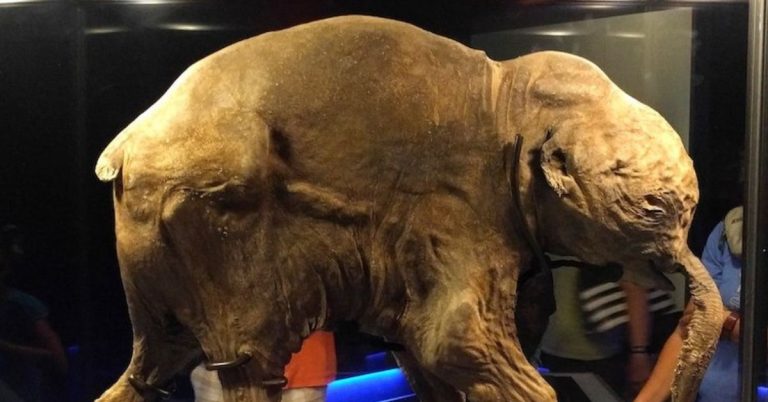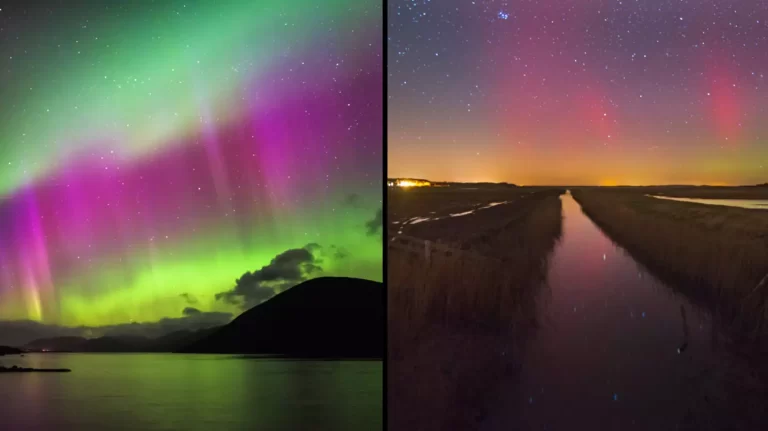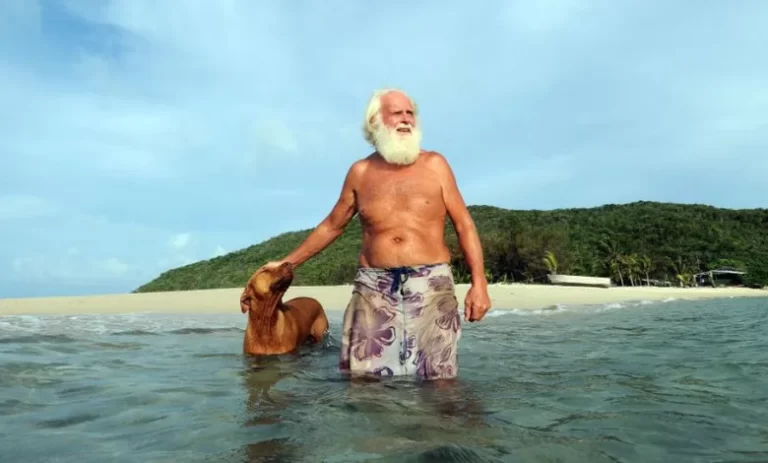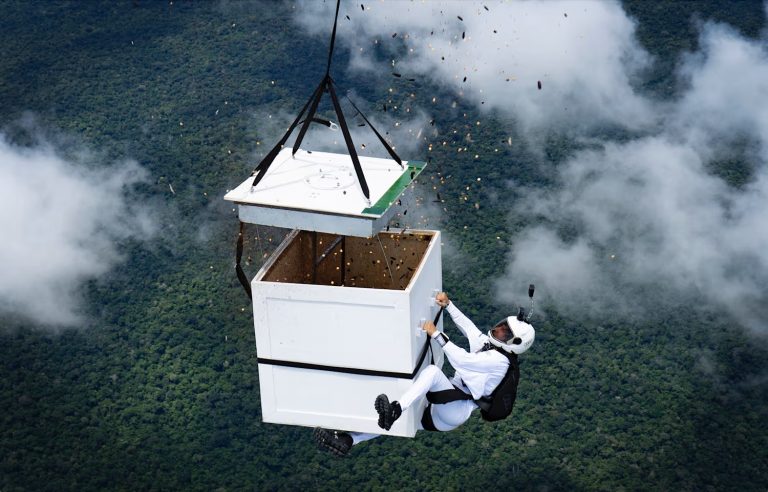The Mysteries of Veryovkina Cave: Earth’s Deepest Known Abyss
Imagine traveling deep into the Earth’s crust, exploring a dark and mysterious world. This is the adventure that awaits in Veryovkina Cave, the deepest known cave on Earth. Located in the Abkhazia region of Georgia, this cave stretches down an impressive 7,257 feet. It remains a fascinating natural wonder, drawing the interest of scientists, spelunkers, and adventurers from around the globe.
The Discovery and Exploration
Veryovkina Cave, named after Soviet speleologist Alexander Veryovkin, was discovered in the 1960s. However, its full depth and complexity weren’t known until recent years. In 2018, a team of Russian explorers from the Perovo Speleo Club reached the cave’s record depth, revealing its true extent.
Reaching the bottom of Veryovkina Cave was the result of years of careful planning and many challenging expeditions. The cave’s complex and dangerous passages make exploring it a major task.
Getting to the cave’s depths requires advanced caving skills and equipment to manage tight spaces, large chambers, and steep drops. Teams often spend days or even weeks underground, dealing with tough conditions that push their physical and mental endurance.
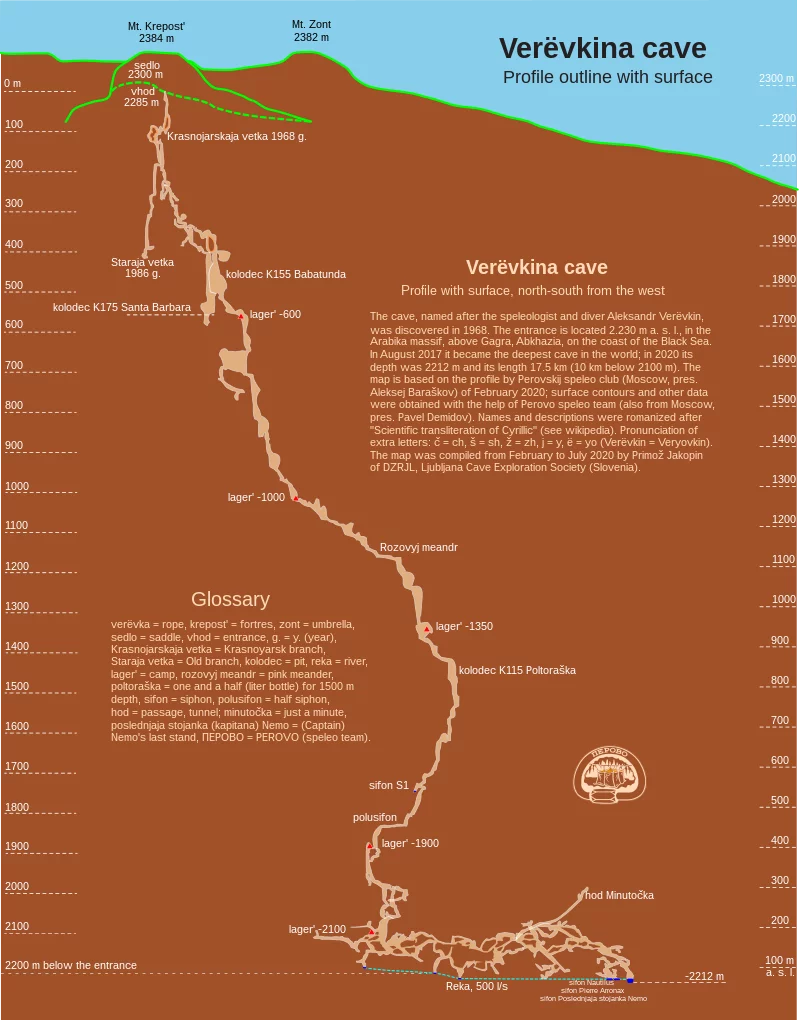
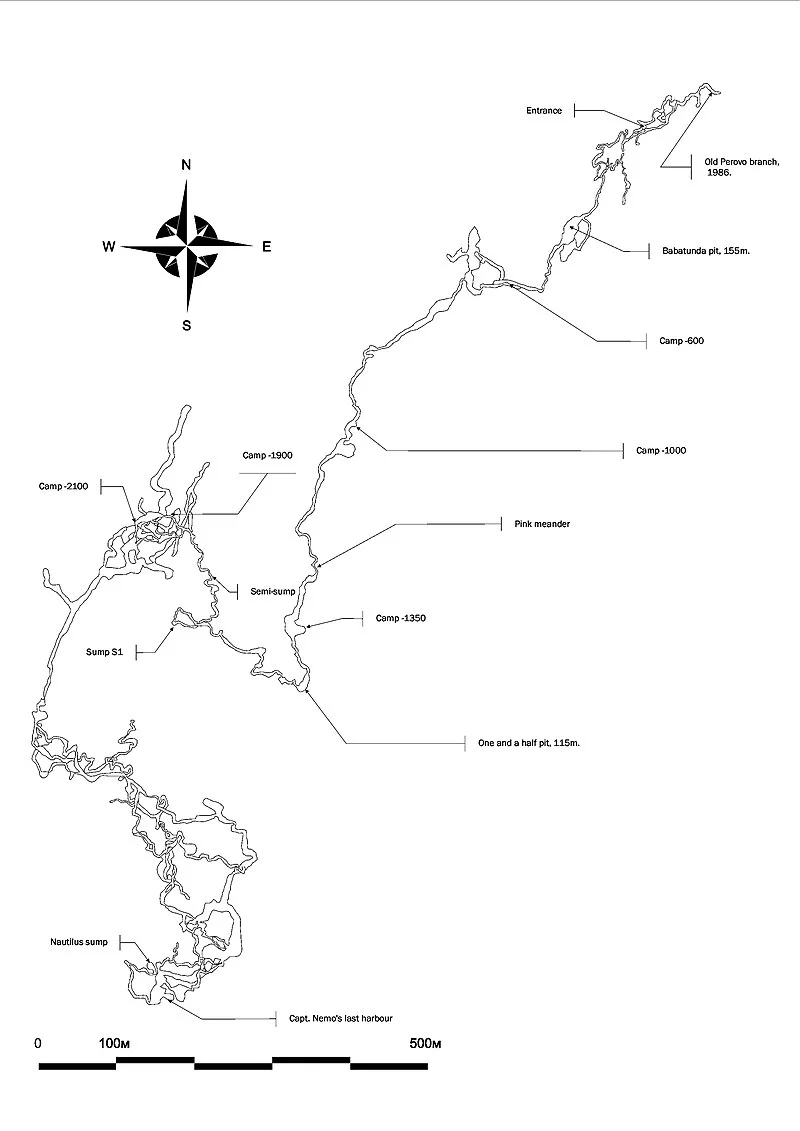
Geological Significance
The inside of Veryovkina Cave is just as impressive as its depth. Its walls are covered with beautiful mineral formations that have developed over millions of years. These include stalactites, stalagmites, and flowstones, which offer important clues about the Earth’s geological history. The different layers in the cave show how natural processes have shaped our planet.
Veryovkina Cave provides a special look into the Earth’s geological history. The layers of rock and sediment inside the cave help scientists learn about past climate conditions and how the cave was formed. Studying the cave formations, called speleothems, can also give clues about past earthquakes and the area’s water history.
Related Post: Dress Immersed in Dead Sea Emerges as Sparkling Salt-Encrusted Masterpiece
Biodiversity in the Abyss
Even with its harsh conditions, Veryovkina Cave hosts a unique ecosystem. Special microorganisms live here, having adapted to the dark and nutrient-poor environment. Instead of using sunlight like most organisms, these microbes rely on chemosynthesis to survive. Studying these life forms can help scientists understand how life adapts to extreme conditions, which might also give insights into the possibility of life beyond Earth.
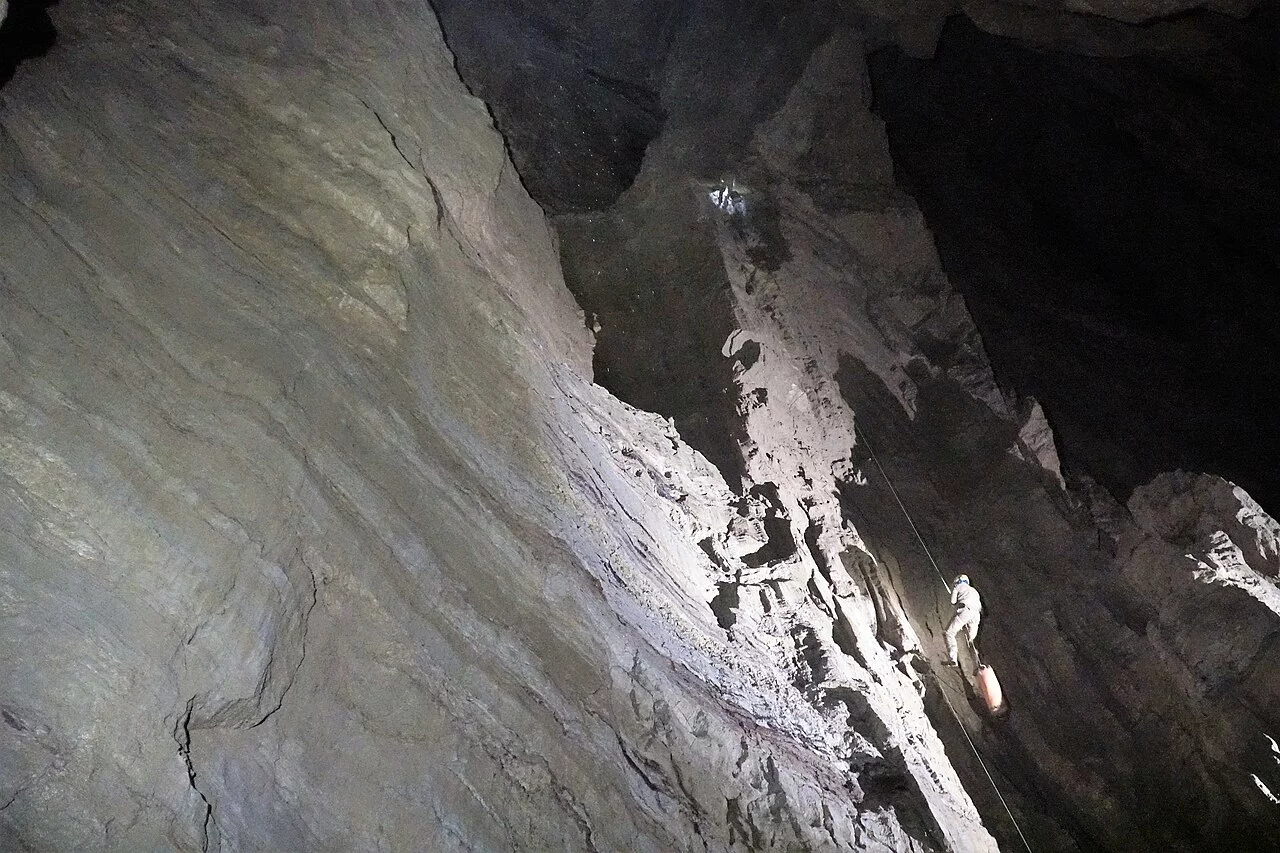
Veryovkina Cave’s environment is perfect for studying extremophiles, organisms that survive in extreme conditions. Research on these life forms helps scientists understand the boundaries of life on Earth and guides the search for life on other planets. The ability of these organisms to thrive in such harsh conditions provides important insights into how life can endure in seemingly impossible environments.
The Human Element
Exploring Veryovkina Cave is a tough and demanding task. It requires strong physical endurance, mental toughness, and careful planning. Expeditions can last several days, so explorers need to bring all their supplies and navigate through tight, often waterlogged passages. Climbing and abseiling are essential because of the cave’s steep vertical drops.
Cavers face many challenges, including narrow, cramped passages and the stress of extended darkness and isolation. They must be in excellent physical shape to handle the tough climbs and descents. Safety is crucial, with teams carefully planning their routes and ensuring they have the right equipment and supplies to handle any emergencies.
The Future of Veryovkina Cave
As exploration of Veryovkina Cave continues, there are exciting possibilities for new discoveries. Scientists and spelunkers aim to learn more about how the cave formed, its unique ecosystem, and whether there are deeper sections yet to be explored.
New technologies like 3D mapping and remote sensing are helping to explore the cave’s hardest-to-reach areas, pushing the limits of what we know and what we can achieve.
The cave’s potential for new findings is enormous. Future expeditions might uncover more passages and chambers, possibly making the cave even deeper. These exploration efforts also help us understand cave systems better and can offer valuable insights for studying similar environments around the world.
The Environmental Impact
Protecting Veryovkina Cave’s delicate environment is very important. The arrival of explorers can unintentionally bring pollutants and disturb the cave’s fragile balance. To address this, there are strict guidelines to make sure exploration is done responsibly.
Preserving the cave’s environment is essential for keeping it intact. Speleologists and conservationists are working together to create best practices for caving. These practices include preventing contamination, managing waste, and avoiding changes to the cave’s structure. This way, the cave’s unique features and ecosystems can be safeguarded for future generations.
Visiting Veryovkina Cave
If you’re interested in visiting Veryovkina Cave, it’s important to know that access is very limited. Due to its extreme conditions and the need to protect its fragile ecosystem, only skilled cavers with special training can explore the cave. However, there are many documentaries and virtual tours available that let you see this amazing underground world from the comfort of your home.
While only a few people can physically explore Veryovkina Cave, virtual tours and documentaries offer a great way for everyone to enjoy its beauty. These resources provide detailed information about the cave’s features, the challenges of exploring it, and the scientific discoveries made inside.
Conclusion
Veryovkina Cave is a fascinating example of the hidden wonders beneath our feet. Its impressive depth, unique rock formations, and special ecosystem make it endlessly intriguing. As scientists and explorers continue to study it, the cave challenges our knowledge of the Earth’s underground world and fuels our desire for adventure and discovery.
For both experienced cavers and fans of natural wonders, Veryovkina Cave reminds us of the incredible places still waiting to be explored on our planet. Its exploration is a journey into the unknown, showcasing human curiosity and determination, and highlighting the many mysteries still hidden deep below the Earth’s surface.
Also read:
9,500-year-old Tree Found In Sweden Is The World’s Oldest Tree.
These Massive Tunnels Were Dug by a Giant Sloth That Lived 10,000 Years Ago in South America
